As kids, my friends and I would stare at clouds on lazy summer afternoons and point out faces and animals we saw in their folds and domes. When the light was right, some of them looked as detailed and real as if chiseled by a meteorological Michelangelo. Later, with kids of our own, we often revisit this simple pleasure.
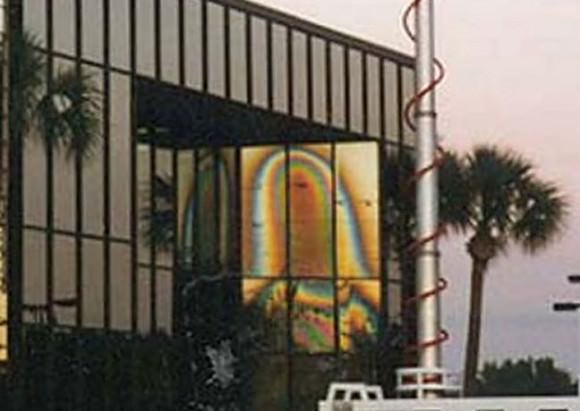
Patterns can materialize anywhere – old men with scraggly beards in carpeting, blocky visages in road cuts and even Jesus on toast. Here are 50 more fun examples. Our instinctive ability to find patterns in the often random mish-mash of nature is called pareidolia (pair-eye-DOLE-ya).
The late planetary scientist and astronomy popularizer Carl Sagan believed pattern-recognition was part of our evolutionary heritage:
“As soon as the infant can see, it recognizes faces, and we now know that this skill is hardwired in our brains,” wrote Sagan. “Those infants who a million years ago were unable to recognize a face smiled back less, were less likely to win the hearts of their parents, and less likely to prosper.”
Maybe it’s simpler than that. Face-recognition is critical because we ultimately need each other for survival not to mention keeping track of the kids in the grocery store. Pattern recognition also helped us find food back in the days of hunting and gathering. The ability to distinguish a particular plant or animal against the background noise meant the difference between a full belly or starvation.
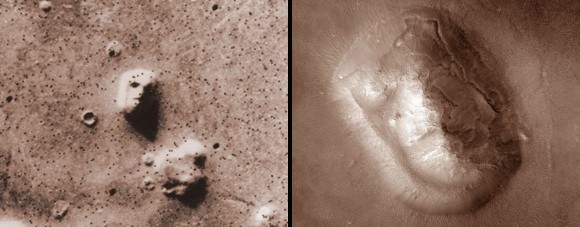
Pareidolia also works its magic across the cosmos. To narrow the scope, I’ve selected images taken of Mars, the most fertile planet for imaginary faces around. Who doesn’t remember all the hubbub over the “Face of Mars”? Old Viking spacecraft images from the mid-1970s taken at low resolution in slanted lighting seemed to show a face carved of rock staring back at Earth.
Since pareidolia works best when the stimulus is vague or the object unclear the “face” was perfect. Our brains are more than happy to fill in fictional details. Later photos taken at much lower altitude with higher resolution cameras made the face disappear; in its place we clearly see an eroded mesa. Then there’s the so-called “Bigfoot on Mars,” (an extremely very tiny Bigfoot) and later someone zoomed in on a small rock and said there was a gorilla on Mars. Information equals identity, lack of detail opens the door to anything we might imagine.
Here are 10 examples of imaginary faces and creatures on Mars. The inspiration to write about the topic came from a series of recent “art” images taken with the THEMIS camera on board the Mars Odyssey spacecraft. The probe orbits Mars every 2 hours and carries three science instruments; the camera combines images shot in 5 wavelengths or colors of visual light and 9 in the infrared or heat-emitting part of the spectrum. Others were snapped by the Mars Reconnaissance Orbiter. All are NASA images, and I’ve taken the liberty to colorize several of the black and whites to approximate the appearance of the color images.
Enjoy!
1. My Happy Martian
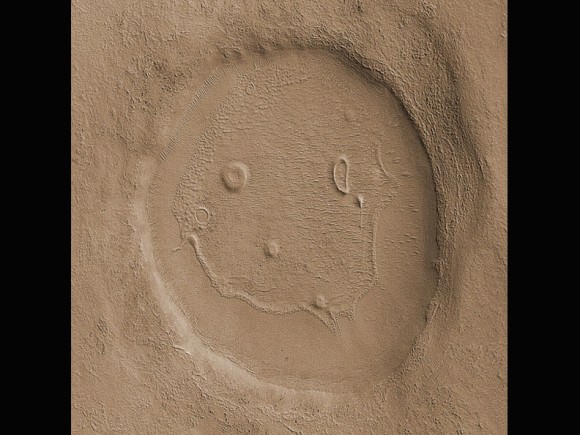
2. That Buzzing Sound
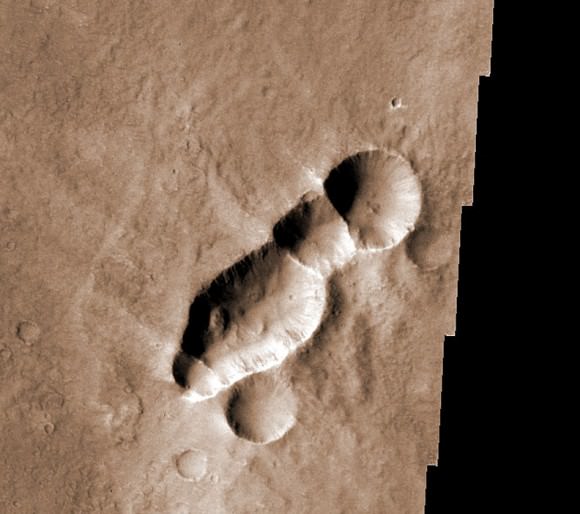
3. The Mammoth Still Lives
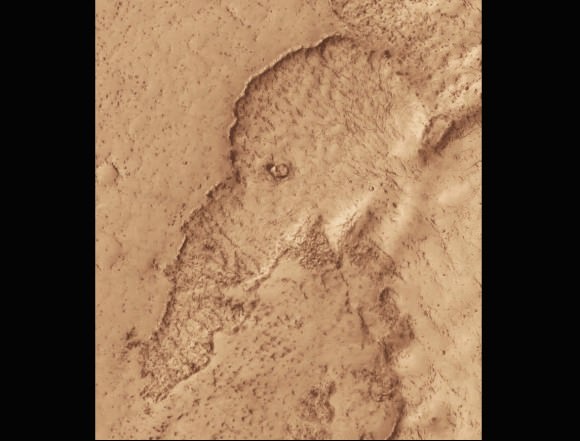
4. Have A Heart (or two)
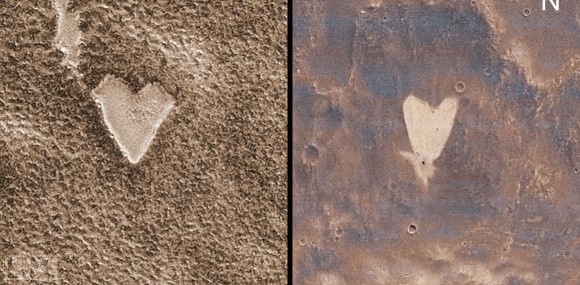
5. Rare Sighting Of A Dust-Covered Hummingbird
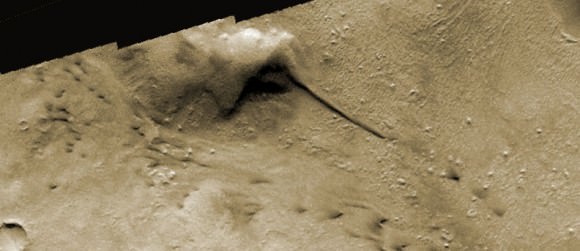
6. Hitchcockian Horror
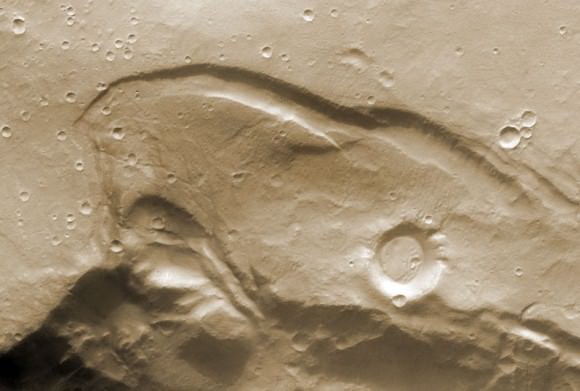
7. Get It In Gear
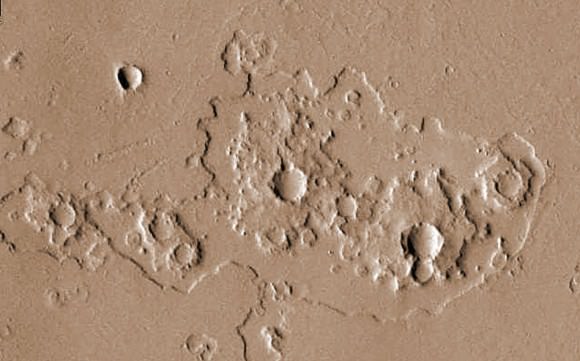
8. Lone Wolf On The Martian Prairie
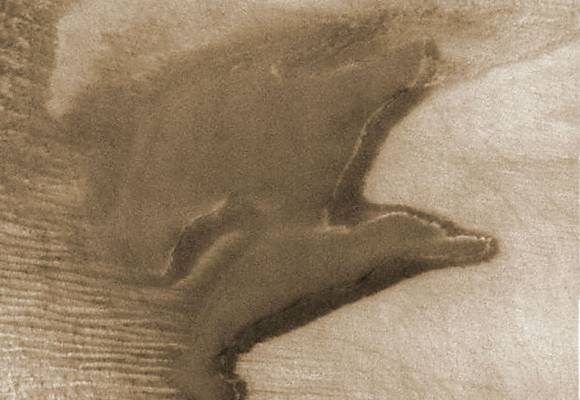
9. Thumbs Up!
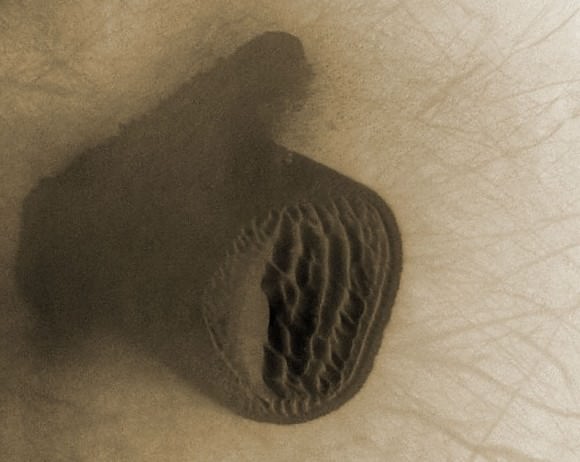
10. To A “T”
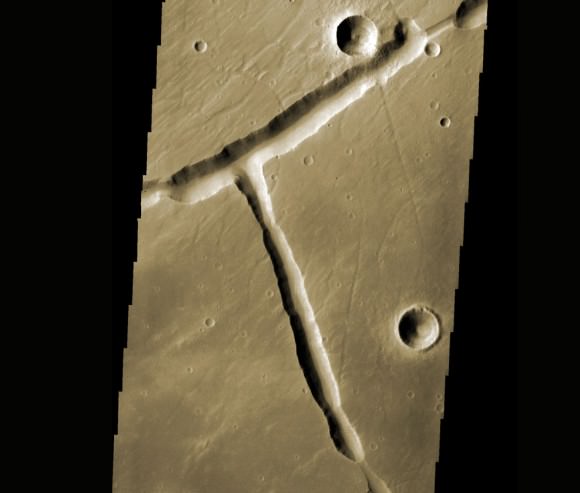

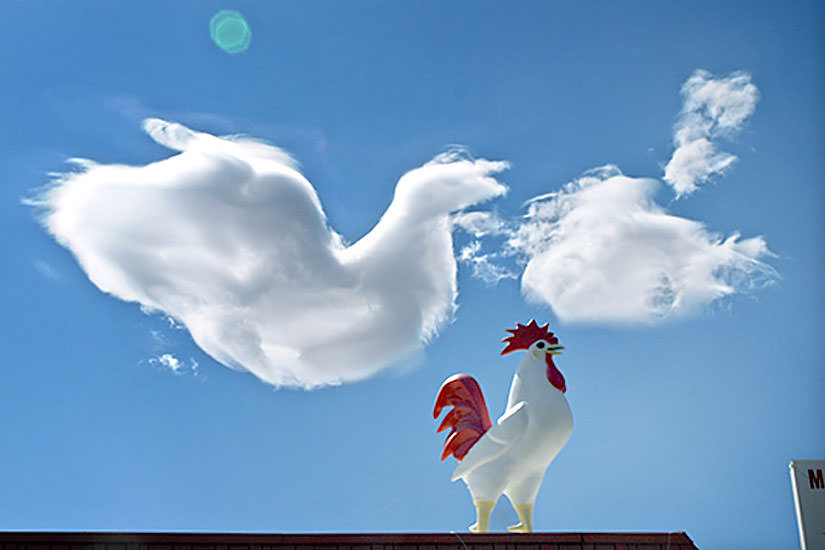
Faces smiling from the ground,
Gorillas and berries all around,
And even squirrels have been found.
I’ve looked at Mars that way.
But now it’s only dust and stone.
Watered canyons now dry as bone.
Mars is no more a temperate zone.
Our dreams got in the way.
I’ve looked at Mars from both sides now
From up and down, and still somehow
It’s Mars illusions I recall
I really don’t know Mars at all.
(with apologies to Joni Mitchell)
Search for the face-like structures can be done, to some extent, with computers :
A Face-like Structure Detection on Planet and Satellite Surfaces using Image Processing
http://arxiv.org/abs/1306.3032
I like seeing this kind of images, makes places and related info a bit easier to remember.